|
|
|
|
Data-driven time-frequency analysis of seismic data using non-stationary Prony method |
Next: CONCLUSION Up: EXAMPLES Previous: Benchmark examples
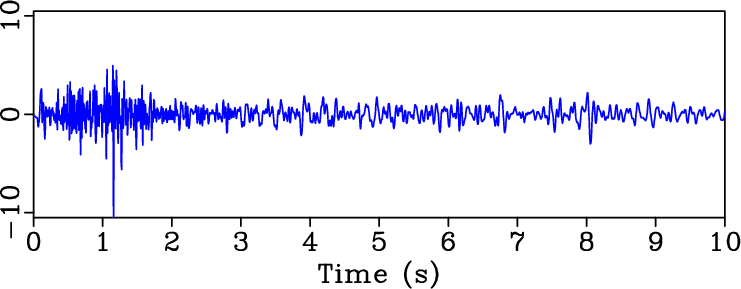
|
|---|
|
trace
Figure 8. Seismic trace from marine survey. |
|
|



|
|---|
|
stf,tfemd,tfnar
Figure 9. (a) Time-frequency map for synthetic signal of Figure 8 using local attribute. (b) Time-frequency map for synthetic signal of Figure 8 using ensemble empirical mode decomposition. (c) Time-frequency map for synthetic signal of Figure 8 using the proposed method. |
|
|

|
|---|
|
data
Figure 10. 2D seismic data section. |
|
|
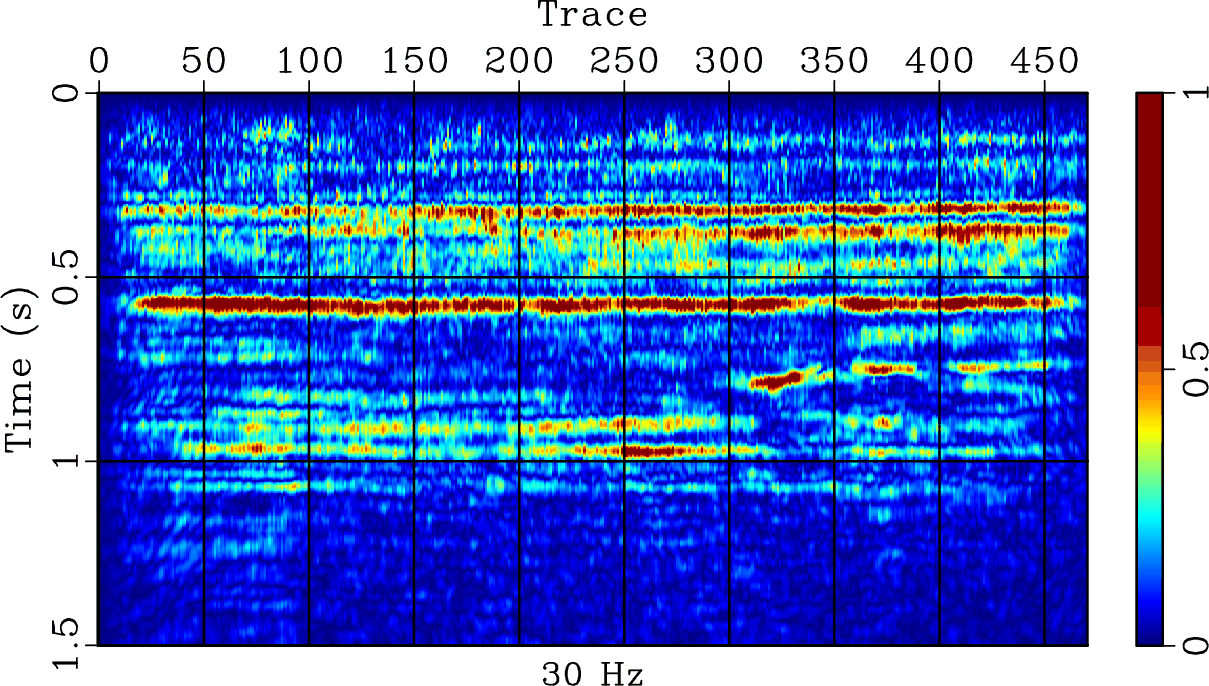

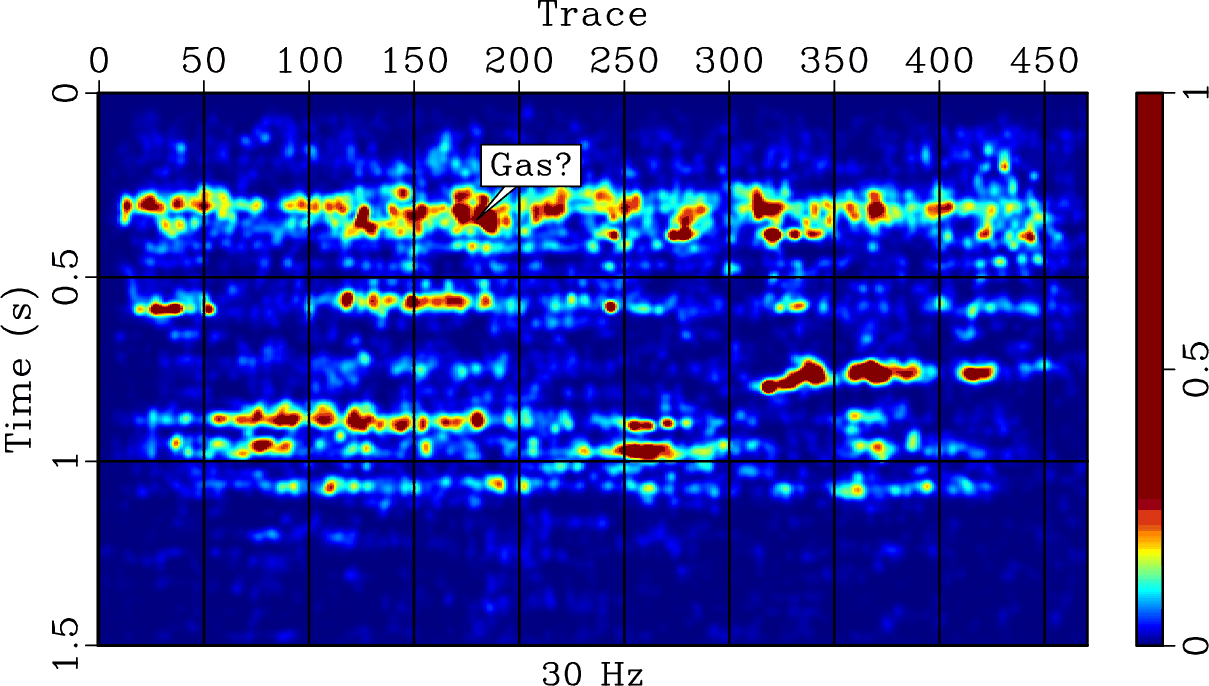
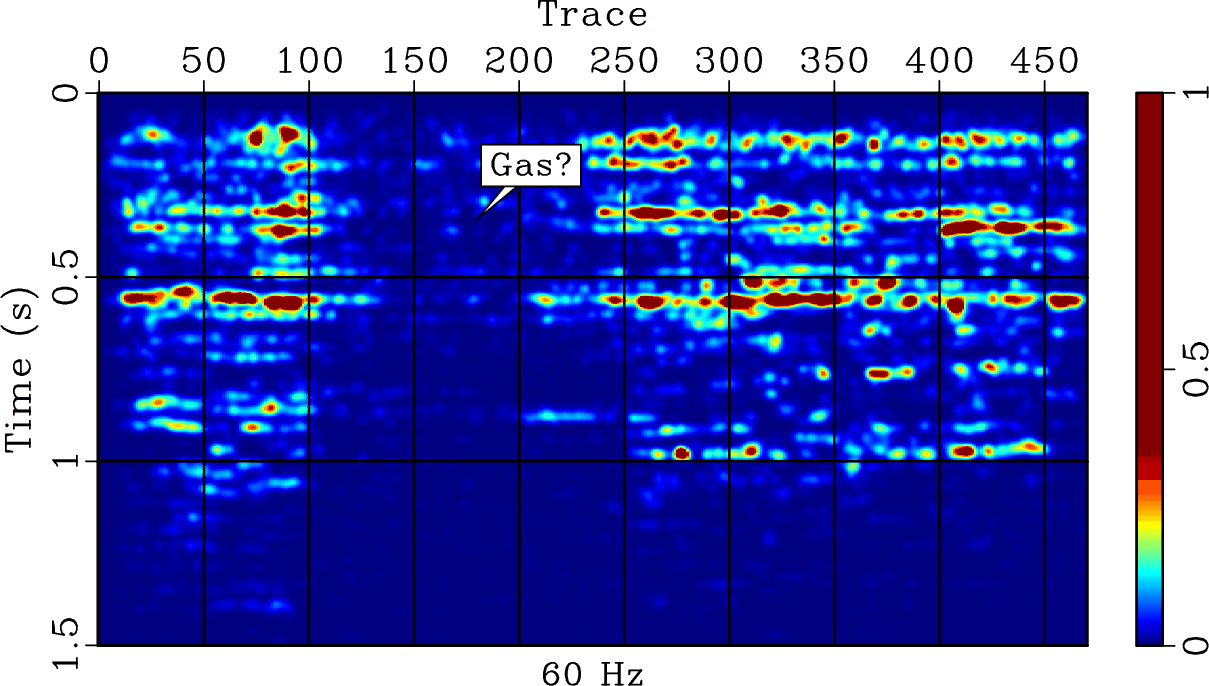
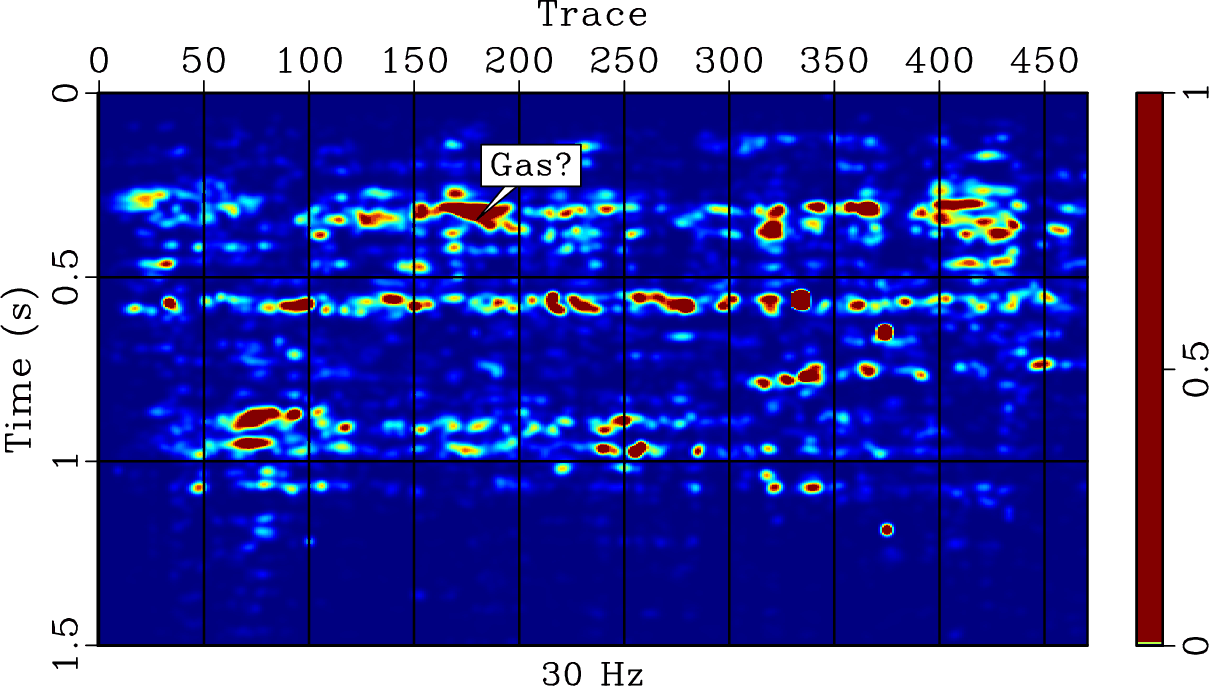

|
|---|
|
LC_TimeFreqSlice3,LC_TimeFreqSlice6,GasSmoothSliceEmd3,GasSmoothSliceEmd6,GasSmoothSliceNar3,GasSmoothSliceNar6
Figure 11. (a) 30Hz slice time-frequency map using local attribute method. (b) 60Hz slice time-frequency map using local attribute method. (c) 30Hz slice time-frequency map using ensemble empirical mode decomposition method. (d) 60Hz slice time-frequency map using ensemble empirical mode decomposition method. (e) 30Hz slice time-frequency map of the proposed method. (f) 60Hz slice time-frequency map of the proposed method. |
|
|
Figure 12a, 12b and 12c are the full time-frequency cubes computed respectively using local attribute, ensemble empirical mode decomposition and the proposed methods. The main panels show constant frequency slices. The right hand side panels show the time-frequency maps of the 150th trace. The top panels show the time-frequency maps of 0.6s time-depth signal. From the right and top side panels we see that there are a lot of noise in the high frequency domain for the ensemble empirical mode decomposition and local attribute methods compared with the proposed method.

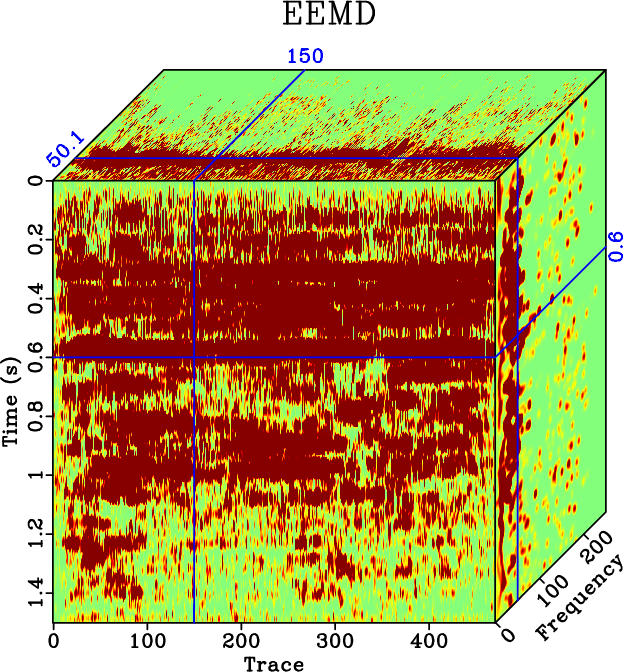

|
|---|
|
TimeFreqCube_LC,TimeFreqCubeEmd,TimeFreqCubeNar
Figure 12. (a) Time-frequency cube using local attribute method. (b) Time-frequency cube using ensemble empirical mode decomposition method. (c) Time-frequency cube using NPM method. |
|
|